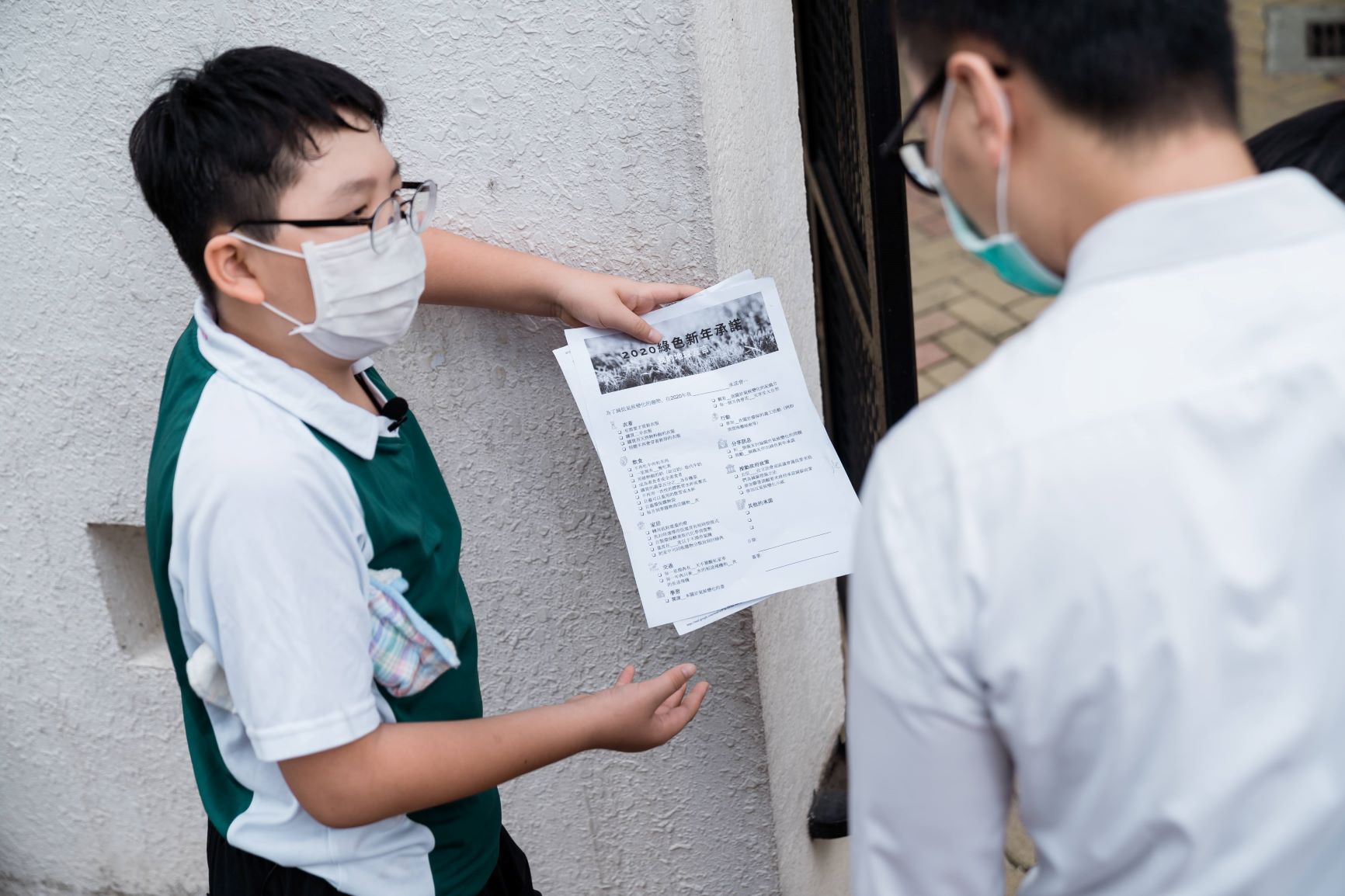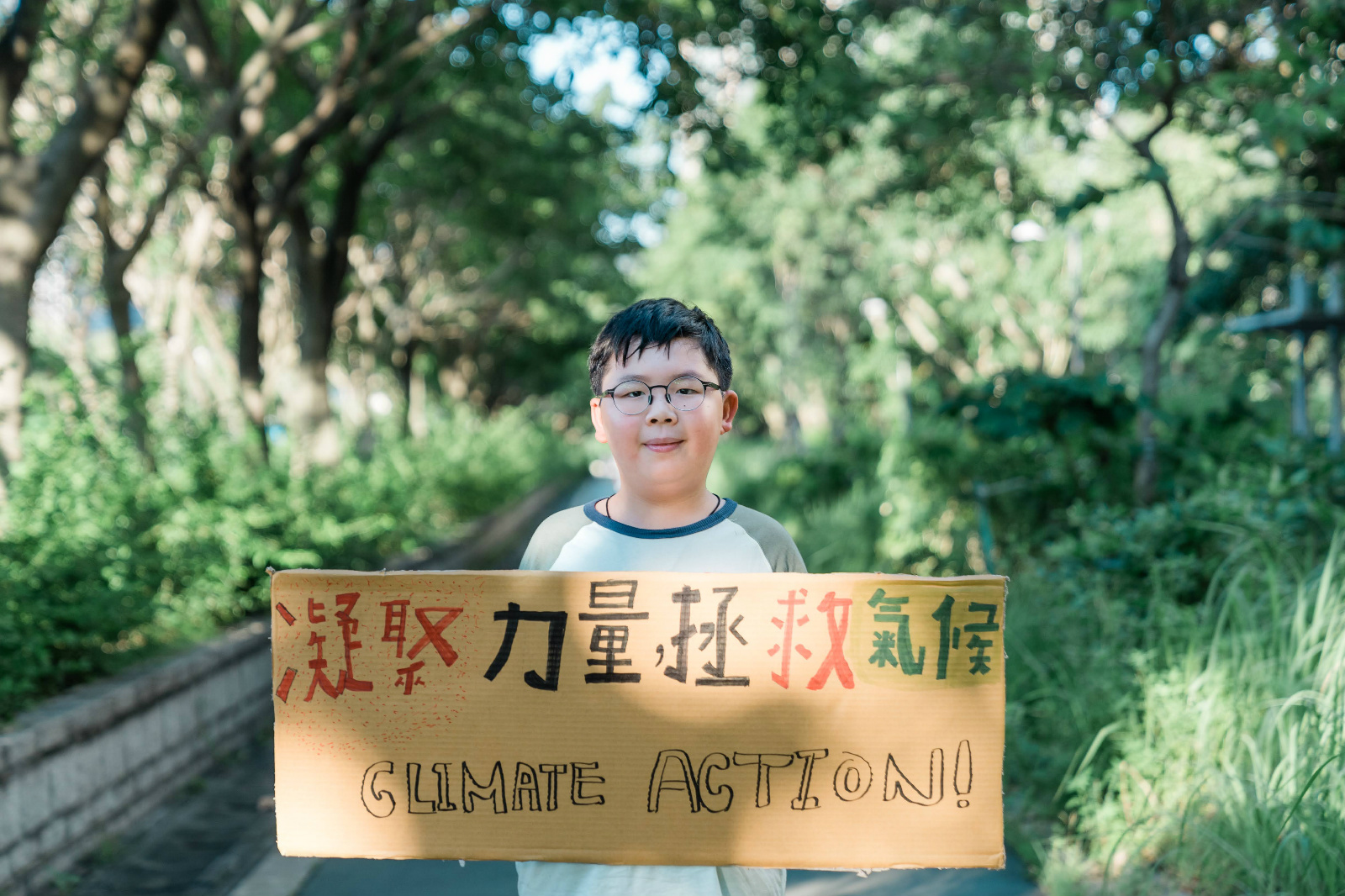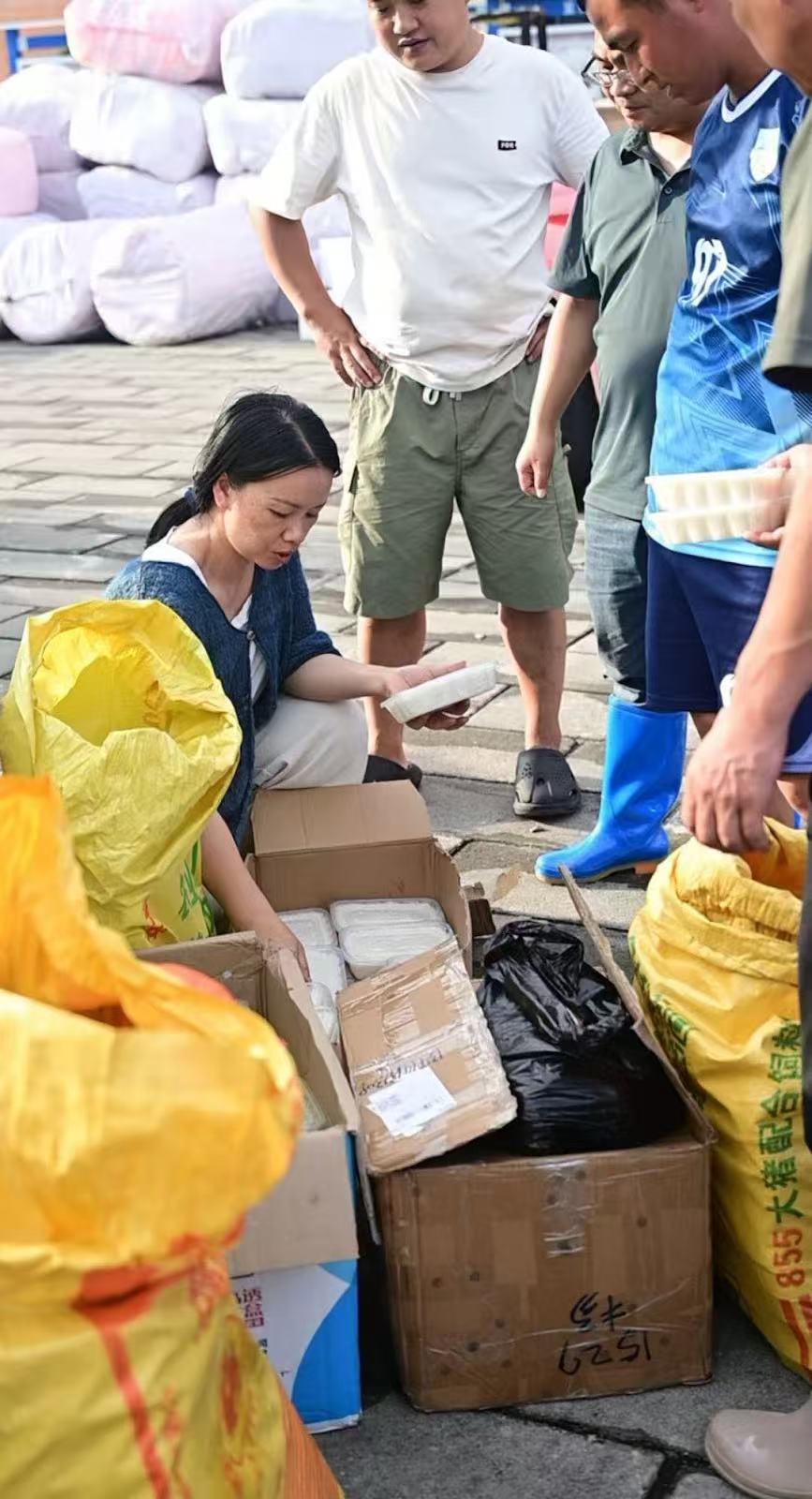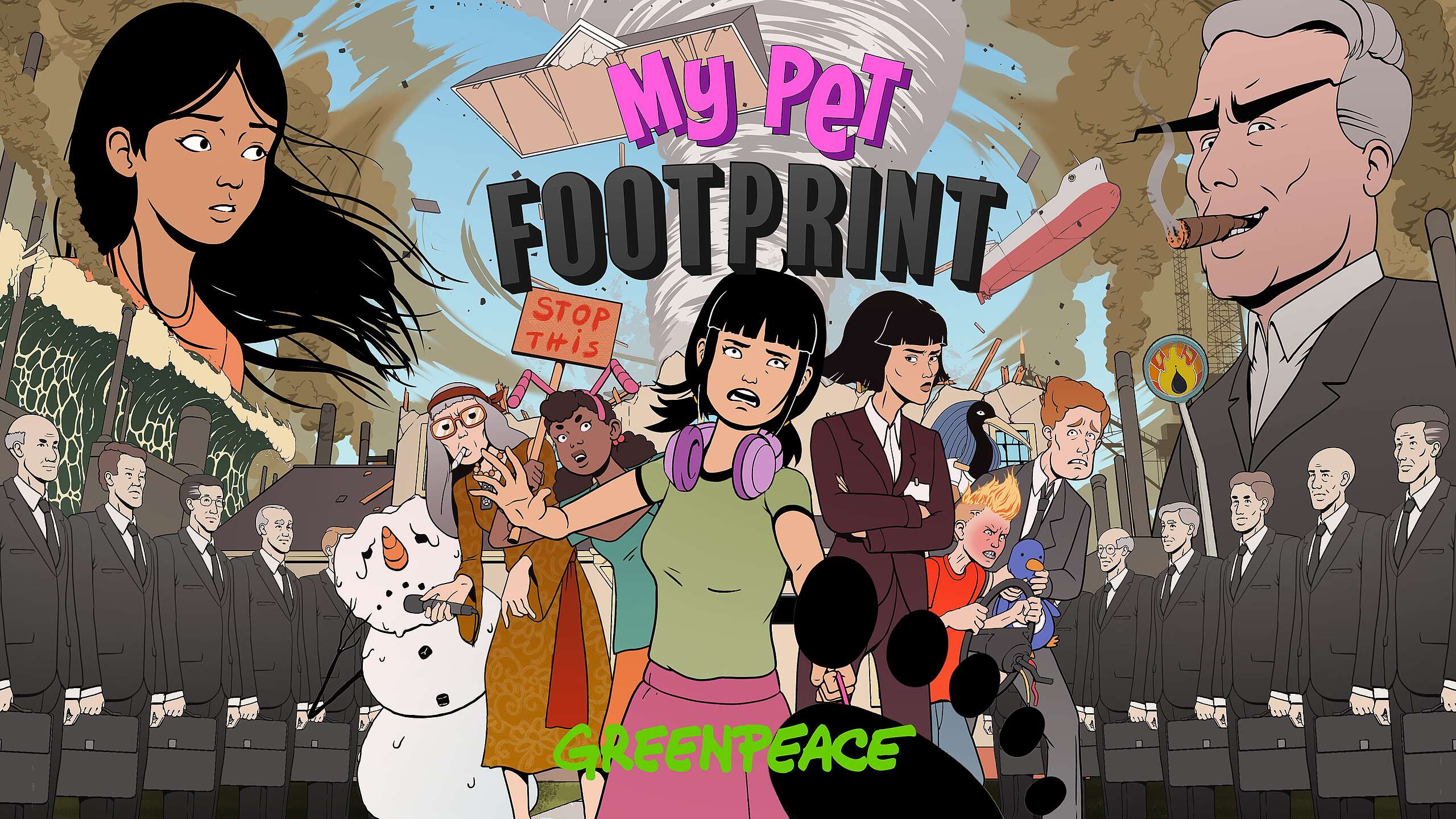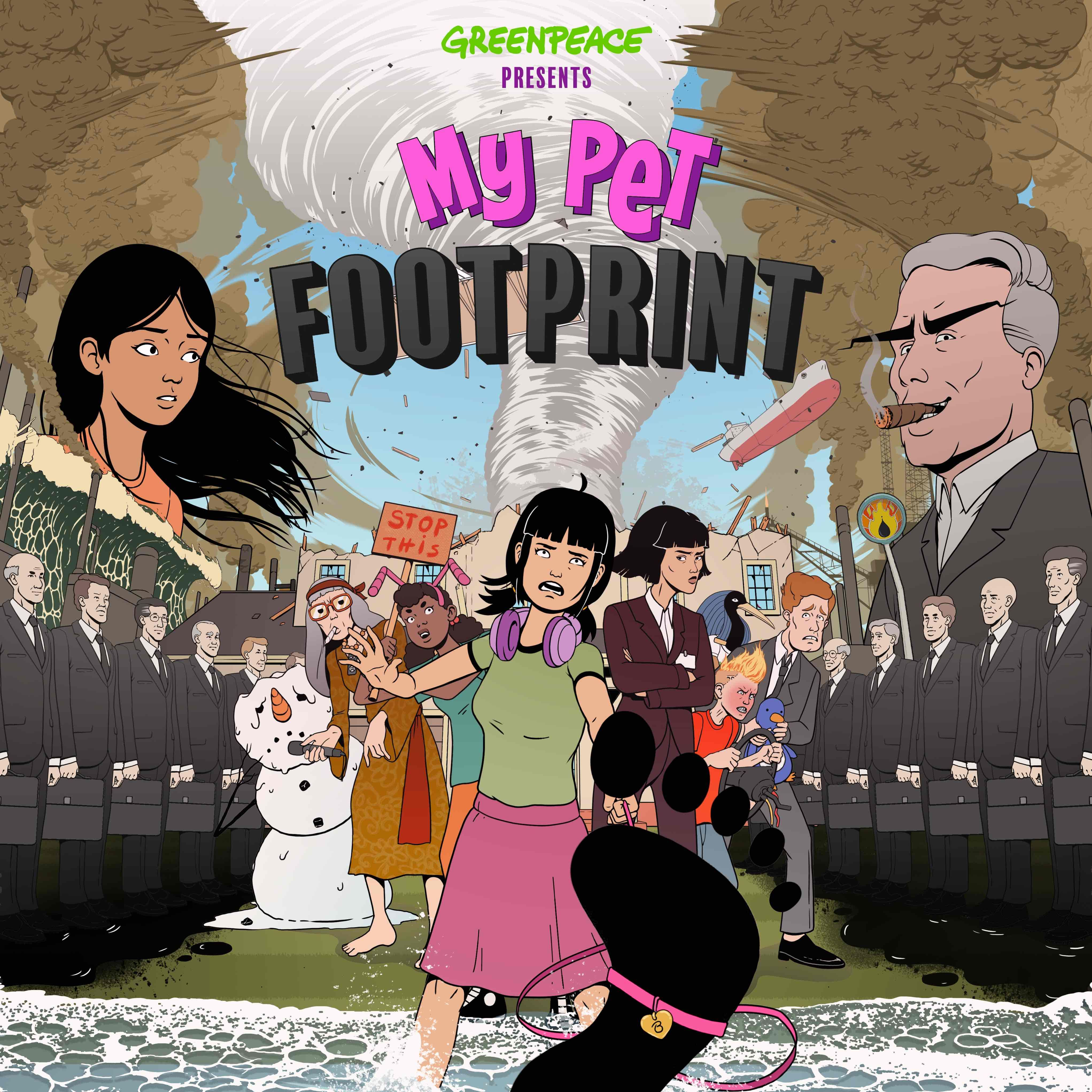11-year-old Hong Kong teenager Lance Lau cares about the impact of climate crisis and has been proactive in taking action to raise public awareness. Greenpeace has interviewed Lance last month on his activist journey and would like to invite him to further share with us now on how he walks the talk in fighting climate emergency.
Teen climate activist in the making
We are curious. What does a teen activist look like at school? What is his favorite subject? “He likes everything except lessons,” Lance’s mom beamed. ‘Yes,’ Lance laughed, ‘And I do love Science and Visual Arts.’
Lance loves Science and adopts a scientific mindset to pursue what he cares about. Facing a subject that he finds interesting, Lance will deep dive into it and read a whole lot. As he is especially concerned about climate issues and environmental protection, Lance reads extensive English materials as most of the latest information is not in Chinese. Subsequently, Lance has boosted up his English ability a lot. ‘Lance’s language proficiency in Chinese is like an average 11-year-old, but his English is way above as he reads a wide range of English materials concerning the Climate,’ Lance’s mom explained.
Lance’s green tips on daily life
Inspired by the Swedish teen activist Greta Thunberg, who initiated #FridaysForFuture movement in 2018, Lance started his very own climate action at school in September 2019. He wanted to just spread the message of climate emergency to his schoolmates when he first started, but as time went by, he wanted to aim higher and build up a bigger power base in Hong Kong to fight climate emergency together.
A climate warrior does not necessarily fight in a war in a real sense. To Lance, walking the talk in day-to-day life is the actual and crucial battlefield in protecting the environment. “In personal capacity, what we can do immediately is to reduce meat consumption or shift to plant-based diet. I know some people hesitate to stop eating meat, we can take it step by step and try quitting beef and lamb first as they generate more carbon dioxide,’ Lance said.
On the other hand, Lance suggests Hong Kongers to bring their own utensils and lunch box when dine out. “Plastic pollution is one of the biggest damages to our oceans. We can make a difference just by bringing our own cutlery, cups, straws, and lunch box,” Lance brings his reusable cup every time he wants to buy a drink, “The waiter will call out loud and say ‘Eco Cup!’ when my drink is ready. It’s fun!”
To further cut down carbon emission, Lance also reminds people to take public transport when possible and consider taking train and bus instead of plane when traveling.
Climate and biodiversity
To Lance, climate emergency is of utmost importance, but it is never the only issue on his list. “We must be concerned about biodiversity and green living too,’ Lance said.
Living in Tung Chung on the Lantau Island, Hong Kong, Lance cares about the ecology in Lantau a lot, especially the mangrove forest. The forest was being relocated from Chek Lap Kok due to the reclamation work of the new airport years back, and now they are under a new threat. The mangrove forest is now located in an easily accessible place, where it is popular for people to go for digging clams. Lance once saw a tourist ‘playing around’ with crabs cruelly. “You can still see horseshoe crabs in Tung Chung, they are endangered species. If you see them next time, please do not disturb them. If you are visiting the mangrove forest, please remember to be kind to the animals.”
Lance is worried about the white dolphin too. “The construction work of the airport 3rd runway will impact their habitat (Sha Chau, Lung Kwu Chau and Tai O Region) on a remarkable scale,” Lance said.
Lance’s green future
‘Green living’ is also on Lance’s radar, what does that mean to him?
“It is not just about planting trees or building more green facilities. In Taiwan, a green building impressed me most, say if you have 10 elevators, only 5 of them are switch on 24/7 and all 10 only depending on the demand for example lunchtime. Same for lights, it will only be switched on when there are people around.”
A green city in Lance mind must be all-rounded, not just being environmentally friendly superficially. Besides having green architecture as hardware, a real green city also needs to have supported facilities such as renewable energy supply, energy saving and water saving measures, and good quality public space for everyone to enjoy. All in all, a real green city must uphold the model of circular economy which allows sustainable use of materials.
So, what does Lance envision himself in future? He wants to be a green engineer as he cares about the environment and climate crisis. Greenpeace wishes Lance all the best in achieving his goal!
About “Let’s Talk about Climate Change” series
Climate change is not only here, but it has also evolved to “Climate Emergency”. As global citizens, we should not ignore the crisis we are in. Yet sometimes if not all, we might feel the issue is too big for us or too far away. We are inviting people in our local community, from all walks of life, to share with us how they connect to and make the effort to deal with climate change. Read More


